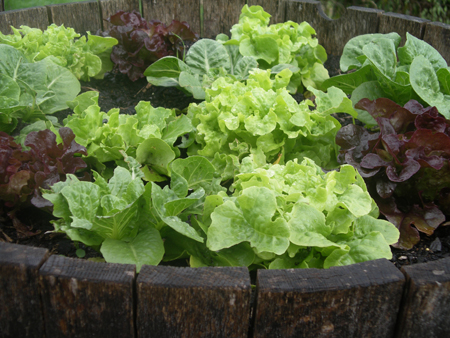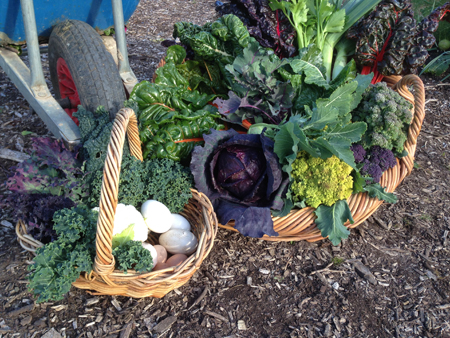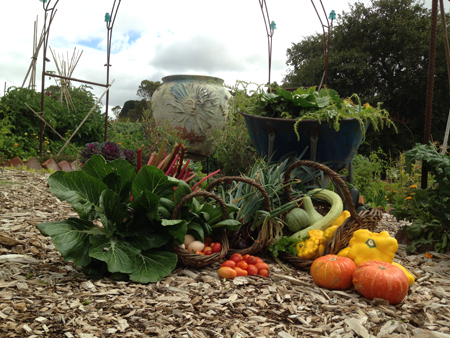Starting a vegie patch from scratch

Over the last 10 years we have seen a surging trend to growing fruit and vegetables in domestic backyards due to concern about the freshness, quality, chemicals inputs, and increasing costs of the fresh food we consume. Then there are the ‘food miles’ – the distance the food travels from the time of production until it reaches us – with some fruit and vegetables travelling 1000’s of kilometres before reaching our homes. Total self-sufficiency may not be possible due to a lack of space and time however, productive gardens, no matter the size, can be very rewarding. If you have never had a vegie patch before, or you want to start one in a new garden, here are the top five things to consider:
Site
It is essential to choose a position that is sunny, especially in winter when the angle of the sun is lower in the sky in southern areas of Australia. In hotter climates it may even be preferable to have an area which only gets morning sun in the heat of summer. The site of your vegie patch must also be free from the root competition of trees and large shrubs unless you are using large pots or a raised vegie bed where you can add a root barrier underneath before you add the soil. If your vegie plot is great for summer but not sunny enough in winter, consider using large pots or even foam boxes that are portable and can be placed in the sunny position as a temporary seasonal measure.
Space
Consider the space you have available. If it is limited, be sure to choose good value plants that will produce well and be worth growing for the space available. A garden bed around 3m by 1m wide will allow you to grow a reasonable selection of varieties, however even a plot just 1m x 1m will allow you to grow a highly productive salad or stir-fry garden.
Soil
Great soil preparation is essential. If working a vegetable garden in the ground, dig over the soil to fork’s depth, adding plenty of organic matter in the form of compost and aged animal manures. If the soil is heavy and contains clay, add plenty of gypsum. Fork through some slow release pelletised organic fertiliser. If you are concerned about possible contaminants in the soil, send a soil sample off for free soil metal and metalloid contaminants testing here. If your soil is really ordinary, contaminated, the ideal site is covered with a hard surface such as paving, or you want to save on bending, you might like to consider creating a raised vegetable bed. This can be done a number of ways, the two most popular being with hardwood sleepers or corrugated iron, pre-formed tanks. Another quick option is to use hay bales as the walls of your plot held in place with some plastic gutter guard mesh. Fill this space with soil and the hay bales become worm refuges, and as the bales break down over the next year or so they can be incorporated into the soil as extra organic matter. When purchasing soil to fill any raised vegie beds always choose a good quality blend suitable for vegetable growing.
Plants
Although there are many choices available, my top 10 easy to grow vegetables and often used herbs that can be planted now are combo lettuces, rocket, spring onions, silver beet or rainbow chard, kale, dwarf peas, bok choy, sprouting broccoli, parsley and coriander.
Maintenance
Keep garden beds free of weeds as they compete with your vegies for space, light and nutrients. Feed your plants regularly to keep them strong, healthy and productive. Watch out for snails and other insect pests and always be sure to use organic pest control.
Are you growing plants or veges in your garden? What do you enjoy the most? Tell us below.











 Proudly Australian owned and operated
Proudly Australian owned and operated